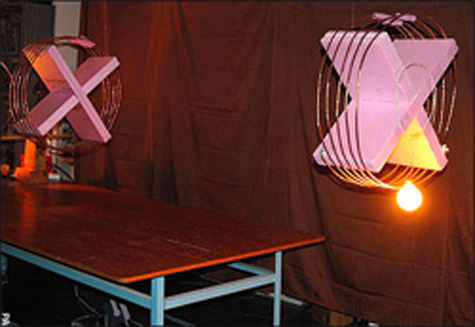
The notion of wireless electricity is as old as Nicola Tesla’s brilliant (or mad) inventions and ideas. The trouble is that while transmitting energy wirelessly is easy (eg, microwaves, radio, etc) transmitting electrical power is difficult, and results in a lot of signal loss in the process. Physicists at MIT (go Physicists!), inspired by the annoying noises that a cell phone makes when it’s battery is dying and its not plugged in to charge, went to work on an idea that so far has only been seen in science fiction books and games: (think Protoss “pylons” in Starcraft) being able to create a “field” of electrical power that objects in range can draw energy from and operate with. They’ve dubbed the technology WiTricity (for “Wireless Electricity”) and have been able to design copper coils that successfully transmitted enough power wirelessly to light up a light bulb.
Don’t expect to charge your laptop from a wireless power station in the middle of your coffee shop anytime soon though, the technology drops about 50% of the broadcast energy between the transmitter and the destination, and only works in the lab within a 7-or-so foot radius. Even so, the scientists at MIT are ready to license their technology to companies who might continue to work on it along with them.

Here in this topic the electricity can only transmitted to small bulbs can’t we prepare a wireless electricity process for transferring the more amount of electricity,if so what type of the material have to be used to produce enough resonance to transfer the energy for a long distance